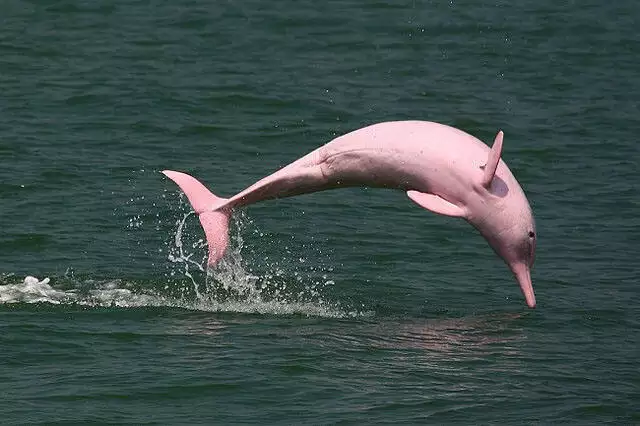Legend of the Pink River Dolphin: the lie that hides predators in the Amazonian countryside
03 de April de 2025

By Inory Kanamari – From Cenarium
Ka tücüna naina. Greetings, reader.
Today, I invite you to reflect on an issue that persists, challenging our consciences: sexual violence against children and adolescents in the countryside of the Amazon, where impunity and silence continue to fuel cycles of pain and suffering. By addressing this topic, I seek to awaken critical thought, a profound questioning of the reality that has been concealed under the guise of myths and legends.
The legend of the pink river dolphin, one of the most well-known in our Amazon, has been told and retold over generations. However, behind this narrative shrouded in magic and seduction lies a cruel truth: the story of the boto is nothing more than an invention used to conceal the true perpetrators of violence against women and girls in the countryside of our region. For decades, this legend has served as a convenient excuse to divert blame from the real aggressors, perpetuating impunity and silence, while at the same time placing the burden of blame on the victims.
According to the legend, the pink river dolphin has the ability to seduce women by the riverbanks, impregnating them and disappearing without a trace. Yet, over the years, no child has ever been born with the features of a boto. This fanciful tale was fabricated by false moralists to justify violence, offering a narrative that absolved the true aggressors while stripping women of their dignity and leaving them at the mercy of a society that refused to recognise them as real victims.
The most tragic aspect of this legend is the fear it instilled in the lives of so many women, who came to fear the riverbanks as if they were places of imminent danger. However, as time has revealed, the true danger often lay within their own homes. The abusers were frequently family members or authority figures in the communities, individuals shielded by the local power structure. In the name of preserving the image of a “perfect family,” society preferred to believe in the story of the boto rather than face the harsh reality: the abusers were within the home.
In the Amazonian countrysides, crimes of sexual violence continue to be rendered invisible. When the perpetrator is someone with social power or local influence, the case is often treated with disregard or ignorance. In many instances, the aggressor assumes the role of the victim, while the woman, in her pain and suffering, is silently blamed. This structure of victim-blaming, perpetuated by an ineffective justice system and unprepared authorities, leads most cases of sexual violence to never reach the judiciary. And when legal proceedings do occur, they often serve only to expose, shame, and harm the victim, while the perpetrator remains unpunished.
The truth hidden behind this legend is clear: the story of the boto was never about a magical and uncontrollable being. It was created by a society that, over time, chose to conceal the shame of the violence committed within its own homes. The true boto, as we now all know, is the man who abuses, the system that silences, and the society that, through its indifference and ignorance, perpetuates the cycle of violence.
Unfortunately, we remain powerless witnesses to the continuous reoccurrence of the same events, which persist to this day, particularly in the most isolated areas of the Amazon, where local power often rests in the hands of men of dubious character.
It is time to break the myth. It is time to reveal the truth. It is time to give a voice to those who have been silenced for so long. Victims of sexual violence deserve to be treated with justice, not as characters in a legend that should never have existed. What do you think about this? Leave your opinion in the comments and share your questions. Together, we can bring visibility to the reality that so many try to hide. Until next time.
(*) Inory Kanamari, the first indigenous lawyer of the Kanamari people. She served as President of the Commission for the Support and Defence of Indigenous Peoples’ Rights at the OAB/AM from 2022 to 2024 and as Vice-President of the Special Commission for the Support and Defence of Indigenous Peoples at the Federal Council of the OAB from 2023 to 2024. She also worked as a consultant on the project to translate the Federal Constitution into the Nheengatu indigenous language for the National Justice Council. She is a columnist for CENARIUM MAGAZINE, activist, poet, and a member of the Academy of Letters, Sciences and Culture of the Amazon (Alcama). She writes as a contributor every Tuesday for Portal Info.Revolução.

